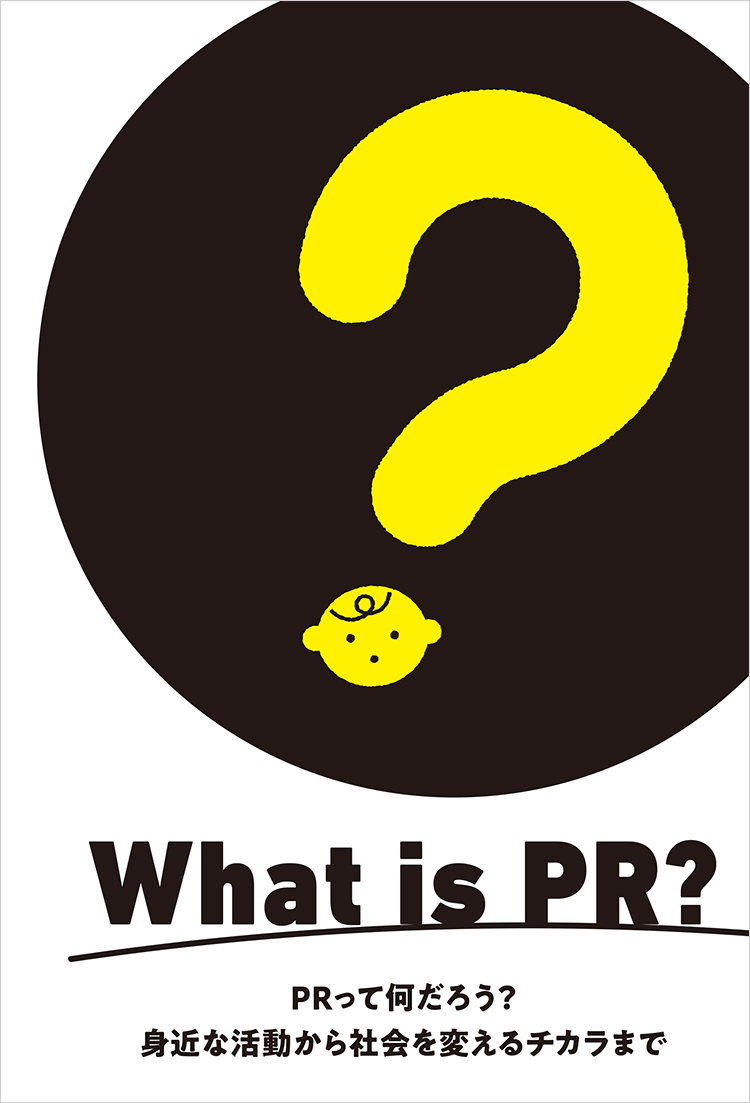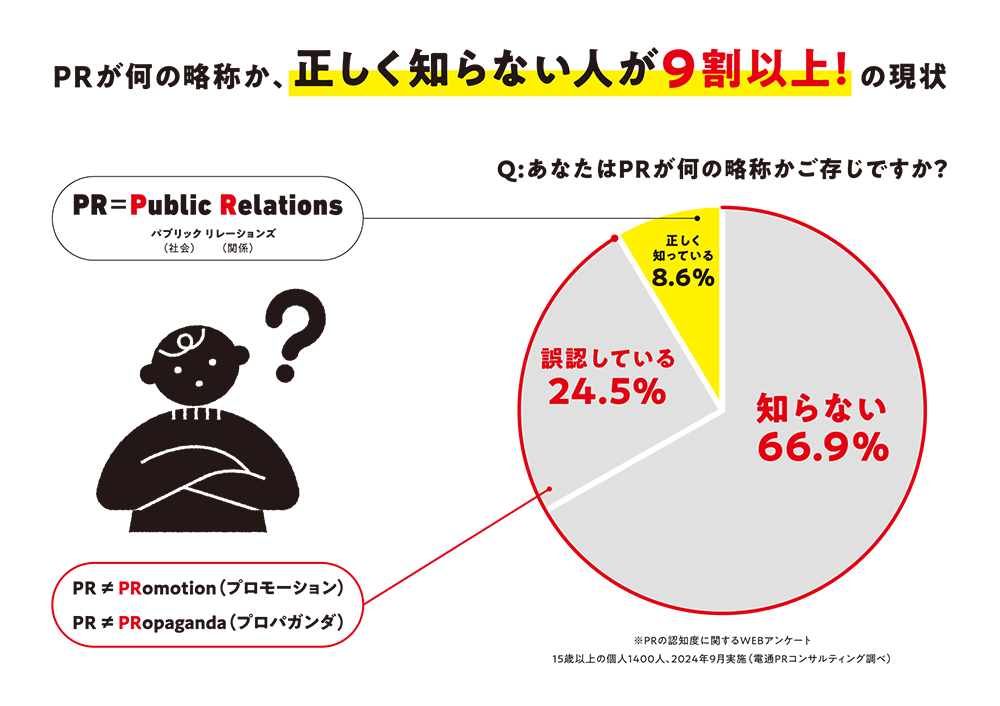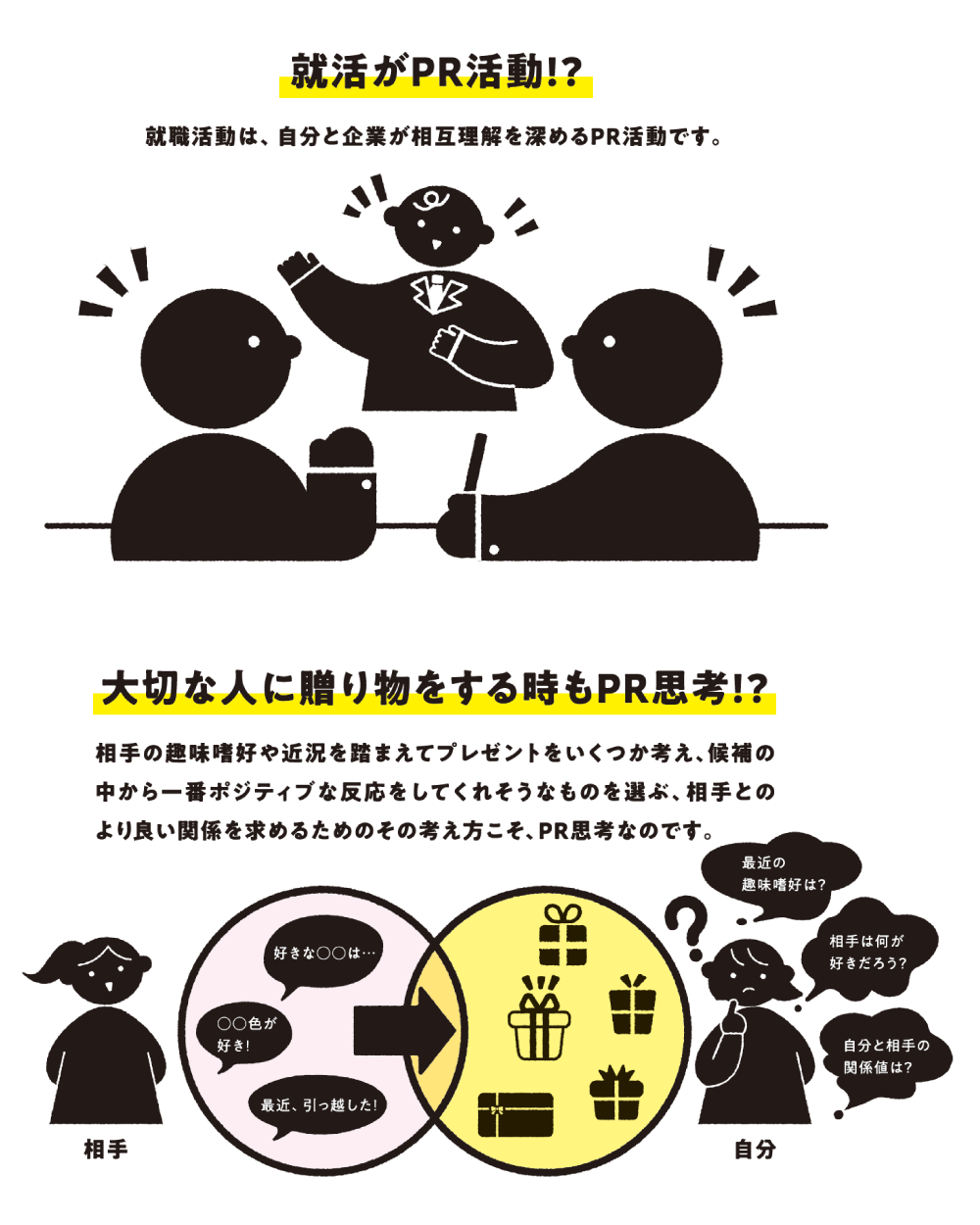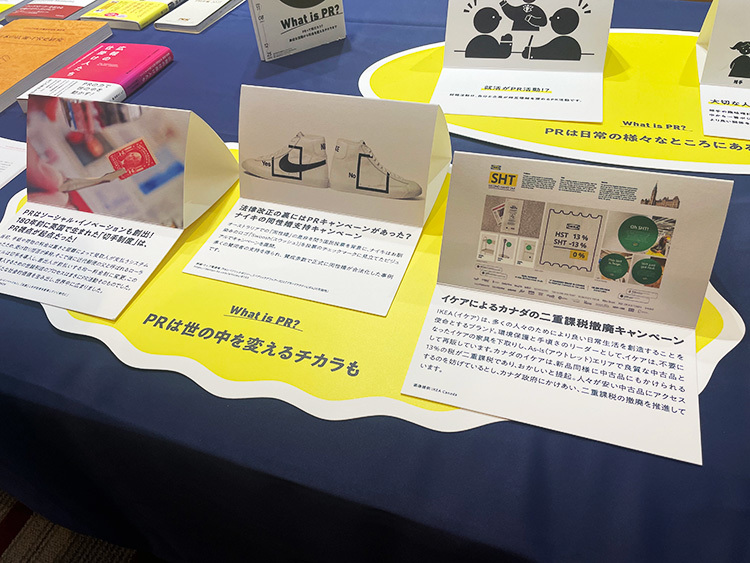Note: This website was automatically translated, so some terms or nuances may not be completely accurate.
Did Sei Shōnagon and Kabuki Actors Embody PR? ~ The Challenge of Visualizing the Intangible: The PR Exhibition

Globally, war, inequality, and division—boundaries are being drawn ever deeper. In Japan too, intolerance and slander toward others persist, particularly on social media. In this era of deepening division and conflict, isn't the power of PR (Public Relations) to generate trust and empathy precisely what is needed? —Yet even this question cannot elicit empathy without understanding that the essence of PR lies in "building relationships."
Did you know that 90% of Japanese people do not correctly understand what "PR" stands for? Although the term "PR" is used daily, fewer than 10% recognize it as an abbreviation for "Public Relations."
Generally, many people use PR with connotations like "promotion" or "advertising." The spread of expressions like "self-PR" and "#PR" further contributes to this misunderstanding.
To make PR more accessible and foster a correct understanding, the PR exhibition "What is PR? ~ From Everyday Activities to the Power to Change Society" was held at the 2024 Ad Museum Tokyo. Due to its popularity, the PR exhibition continues to be held periodically at various locations throughout Tokyo.
It's an effort to clearly convey the true nature of PR—not merely disseminating information, but building lasting relationships and trust between organizations and society—to the general public, exploring a wide range of topics from Sei Shōnagon to current social issues. This series will cover the background and conceptual intent of the exhibition in Part 1, and delve into the history of PR and how it has engaged with society in Part 2.
The Journey to Unraveling "Misunderstandings" Through an "Exhibition"
The catalyst for confronting the challenge that PR is not properly understood in society was an article titled "Common Misconceptions About PR" published on Web Dentsu Inc. After its release, it garnered significant resonance both within and outside our company. It starkly highlighted the current reality where the term "PR" is often confused with "promotion" or "advertising" in society.
This time, we decided to "visualize" the misconceptions highlighted in that article and deliver the question "What is PR, fundamentally?" to a wider audience in an accessible way through an exhibition. This led to the creation of the PR exhibition: "What is PR? ~ What exactly is PR? From Everyday Activities to the Power to Change Society."
The venue chosen was the Ad Museum Tokyo. With the museum's staff supporting our concept, the venue was secured relatively early on. This museum is operated by the Hideo Yoshida Memorial Foundation. Hideo Yoshida was the fourth president of Dentsu Inc. and the person who first introduced PR as a "business" to Japan. The fact that we could hold the PR exhibition at a place connected to his vision—his foresight as an advertising company president who saw the future potential of PR—was highly significant.

However, the path to opening was far from smooth. As soon as we began planning the exhibition structure, we hit a major wall: the reality that PR lacks the "visible form" that advertising possesses. We faced the challenge of how to "visualize" PR and make it work as an exhibition.
After much deliberation and twists and turns, our first step was to concretely demonstrate the vague "common misconceptions about PR" using "numbers." Revealing the depth of these deeply rooted societal misunderstandings through quantitative survey results became the starting point for the exhibition.
90% Don't Know the "True Nature of PR"
In September 2024, results emerged from a web survey on PR awareness conducted by PR Consulting Dentsu Inc. (※). As mentioned earlier, over 90% of respondents in Japan either "didn't know" the official name of PR or "misunderstood" it. While anticipated, even the author hadn't expected such a stark figure. The most common misconception was viewing PR as part of "promotion" or "advertising."
While terms like "self-PR" or "#PR" are indeed common in daily life, this also means that fewer than 10% of people know PR stands for "Public Relations." Even among visitors at the exhibition venue, many stated, "I always thought PR was short for 'promotion,'" highlighting how deeply ingrained these misconceptions are.

What is PR, fundamentally? 7 Perspectives to Visualize PR
Given this reality, this exhibition focused on making PR as clear and "visible" as possible through the following seven perspectives. We created original booklets of a few pages summarizing key points for each theme. Combined with videos and POP displays, this created an exhibition layout that communicates visually and intuitively.
① What exactly is PR?
② When did the term PR originate?
③ The modern definition of PR
④ How is it different from advertising?
⑤ PR is everywhere in daily life!?
⑥ PR existed even before the Common Era
⑦ PR also has the power to change the world.


Particularly drawing attention at the exhibition was the "PR Timeline," displayed in collaboration with The Museum of Public Relations in New York, USA. This exhibit traces the history of PR and the evolution of its social role, from ancient cave paintings to modern AI technology.
For example, the "Beginning of Information Dissemination" is traced to ancient Egyptians using hieroglyphics to carve messages into temples, monuments, and tombs to reach more people. Regarding the "Emergence of the Spokesperson," the Bible depicts prophets conveying divine messages, which some theories view as the prototype of the spokesperson. Notably, some historians even describe Saint Paul's missionary activities as a "PR campaign." Feedback included comments like "I learned so much—it was all new to me," reaffirming the value of visualizing PR's history and context. In the second part, we'll introduce this "PR Timeline" and its creator, The Museum of Public Relations.
Was Sei Shōnagon a "Public Relations Officer"? Are Kabuki Actors "Influencers"?
The exhibition also introduced "PR perspectives" found within Japanese history and culture. For example, Sei Shōnagon, known for her Heian-period essay collection The Pillow Book. She skillfully conveyed the character and charm of Empress Teishi, the consort of Emperor Ichijō, resonating with many people. She can truly be called a "skilled public relations officer." This perspective is now widely accepted, and The Pillow Book is introduced in the exhibition as a "well-crafted PR publication."
Furthermore, kabuki theater served a role akin to modern product placement, naturally featuring corporate goods and services. Edo-period kabuki actors were figures of aspiration for the common people, akin to modern "influencers." The more popular the actor, the greater the influence not only of their performance but also of their words, actions, and messages, leaving a deep impression on audiences.
The prevalence of elements mirroring modern PR techniques demonstrates that the essence of communication remains unchanged across eras. Viewed from this perspective, PR is not exclusive to the modern age but represents a social practice that has influenced people throughout history and culture.

From "Everyday PR" to "PR That Changes Society"
To help people realize PR exists in their everyday lives today, topics like "Job hunting is all about how you present yourself—it's PR itself" and "The perspective of choosing a gift for someone important is already PR thinking" are introduced. The aim is to show that PR isn't just for special people; it's something everyone engages with daily.
Moreover, PR possesses the power to change society. By showcasing examples from global companies that have won awards in the PR category at Cannes Lions, it demonstrates how initiatives addressing social issues like gender equality, driven through brands, can even push for legal reforms in a country, creating significant societal impact. We hope visitors will gain a tangible understanding through these real-world examples that PR is not merely a "means of communication," but a force capable of swaying public opinion, changing values, and influencing society.


Especially in this era of division. Opening new possibilities for PR through "communicating accurately."
Understanding PR correctly can also lead us to reexamine our relationships with ourselves, others, and society. The survey finding that "90% of people do not correctly understand PR" is a challenge the PR industry cannot overlook. To reiterate, PR stands for "Public Relations" and is not synonymous with advertising or promotion. PR inherently possesses the power to approach goals from the level of management strategy, to grasp social issues holistically, and to create value over the long term. If it is currently perceived merely as a "short-term marketing tactic," that is a tremendous waste.
We hope this PR exhibition will serve as an opportunity for the general public to "correctly understand" PR, and for practitioners to "re-examine the essence" of their work. We would be delighted if this exhibition becomes a step toward cultivating the next generation of PR talent and sparking new movements within the industry.
As mentioned at the outset, we live in an era where divisions and conflicts deepen, and the boundaries between "truth" and "fake" grow increasingly blurred due to AI advancements. It's an age where it's hard to see "what to believe and who to engage with." Amidst this, the value of PR (Public Relations) is being questioned more than ever before. Its role is to connect "people with people" and "businesses with society," building relationships that foster trust and empathy.
Dialogue, not anonymous slander.
Not one-way communication, but two-way relationship building.
What is needed now is an attitude that embraces dialogue with others, fearlessly seeking to build relationships by standing in their shoes. It feels as if this underscores the need to return to fundamentals precisely when divisions and conflicts accelerate.
The PR exhibition "What's PR?", launched in autumn 2024, continues to be held irregularly at various locations throughout Tokyo. We hope this exhibition, truly a "mobile PR museum," will gradually help unravel the persistent misunderstanding that "PR = advertising or promotion." If you encounter this exhibition somewhere, please stop by. You're sure to gain new insights.
<Source Material Cooperation>
The Museum of Public Relations (NY)
Ad Museum Tokyo
Japan Public Relations Association
International Public Relations Association
Public Relations Society of America
NPO Change the Ref
Edelman Canada
Dentsu, PR Consulting Dentsu Inc.
<Production Support>
Taki Corporation
Was this article helpful?
Newsletter registration is here
We select and publish important news every day
For inquiries about this article
Author

Nakagawa Ikuyo
PR Consulting Dentsu Inc.
Integrated Communications Bureau
Chief Consultant
Long experience in planning, organizing, and executing PR events for government agencies and corporations. After returning from childcare leave, worked in the management department to promote operational efficiency, including employee work practices and knowledge sharing. Also involved in developing the company's corporate philosophy. Currently supports internal and external branding while planning and executing internal initiatives. Co-authored books include "Welcome to the Corporate Museum" (Jiji Press) and "Proposals for PR 4.0" (Sendenkaigi). Certified PR Planner by the Japan Public Relations Association.


